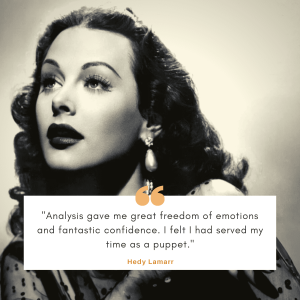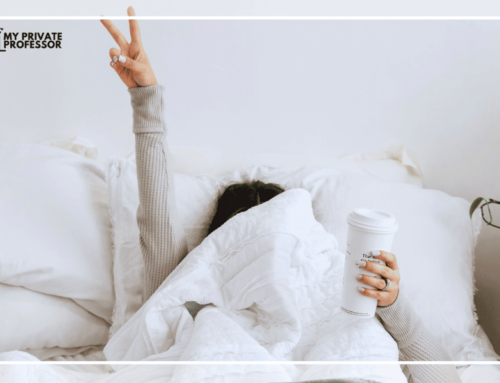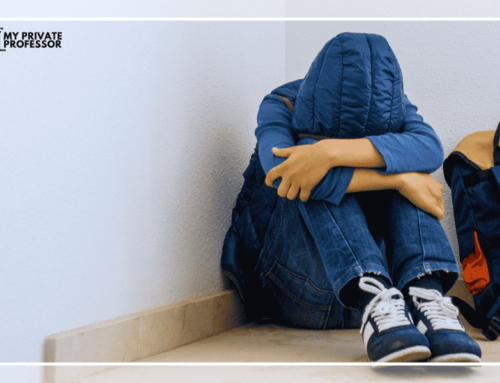When you have misperceptions of history, you may in turn develop skewed perspectives of your potential—for instance, in regards to what women can achieve. Because, really, we look to those who came before us when considering what’s actually in the realm of possibility.
In historical narratives, women are often overlooked. As a result, we develop these misperceptions.
But we can do our part to recognize what else there may have been to the story by expressing gratitude to these women and remembering, specifically, this is what they did. And then, we can develop a clearer understanding of women’s potential—and so can others.
1. Mary Wollstonecraft (1759–1797)
British writer, philosopher, and advocate of women’s rights, Molly Wollstonecraft was truly a trailblazing feminist. With the help of her sister and friend, Wollstonecraft established a school for girls in London, which was essentially the foundation for her ideas on the importance of equal education for all.
Wollstonecraft was one of Britain’s first great feminist writers, according to the British Library. Significantly, she suggested that women weren’t innately inferior to men in her 1792 book, A Vindication of the Rights of Woman, according to Brooklyn Museum. Rather, she explained, society had that perception because women weren’t allowed to receive an education.
2. Ada Lovelace (1815–1852)
Ada Lovelace, unbeknownst to many, is often deemed the first computer programmer. Specifically, Lovelace was the first to identify that a computer had many more functions than simply making calculations.
At age 17, Lovelace met mathematician Charles Babbage. Lovelace was captivated by Babbage’s “Difference Engine,” which was an early version of the modern-day calculator, according to National Geographic.
Before the first computer was invented, Lovelace recognized that analytical machines had the potential to not only calculate numbers, but also to form patterns with letters. And this is the basis of simple computer programming.
3. Nellie Bly (1864–1922)
An American journalist, Nellie Bly was a pioneer in her field, international journalism. At a time when airplanes didn’t exist, Bly traveled around the world in only 72 days, according to the National Park Service. (She traveled via train, steamship, rickshaw, horse and donkey, says Smithsonian Magazine.)
Additionally, during her time as a journalist, Bly spearheaded an expansive investigation of the horrors of mental asylums.
In order to enter facilities, she had to feign mental illness. This didn’t stop her. For instance, at her first assignment, Bly successfully pretended to have amnesia while undercover at the Women’s Lunatic Asylum on Blackwell’s Island.
Bly used her role as an undercover agent to expose the poor treatment that people in asylums experienced. In her book, Ten Days in a Madhouse, Bly also highlighted the fact that a lot of patients were being admitted when they were actually healthy—but often, they didn’t speak fluent English, which made it difficult to convince the nurses that they were sane.
4. Lilian Bland (1878–1971)
Lilian Bland was certainly not one to conform to society’s gender norms, according to the BBC. She was an engineer, photographer, artist, car dealer, and Jiu Jitsu teacher. Meanwhile, at the time, a woman who followed her interests and prioritized her hobbies was inconceivable.
In 1910, months after Harry Ferguson became the first person in Ireland to fly his own plane, Bland became the first woman in the world to design, build, and fly her own plane—a plane made from spruce, bamboo and canvas.
5. Josephine Baker (1906–1975)
Although mainly known for being a performer, Josephine Baker was much more than that. 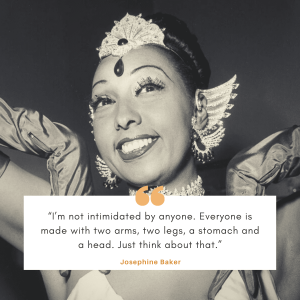 During World War II, she joined the French Resistance, taking advantage of her position as a performer in order to support France. At performances and parties, Baker smuggled messages to the French. Using invisible ink on music sheets, she passed on confidential information to the soldiers, according to the New York Public Library.
During World War II, she joined the French Resistance, taking advantage of her position as a performer in order to support France. At performances and parties, Baker smuggled messages to the French. Using invisible ink on music sheets, she passed on confidential information to the soldiers, according to the New York Public Library.
Baker was also determined to contribute to the fight for racial equality. For example, she demonstrated her commitment to activism by refusing to perform for segregated audiences.
6. Mildred Didrikson Zaharias (1911–1956)
In 1932, Mildred Didrikson Zaharias competed in the U.S. women’s track and field championship. Zaharias was the only member of her team. Nevertheless, she won 5 events and the overall championship, according to the National Women’s History Museum.
In the 1932 Los Angeles Olympics, Zaharias won three medals—one silver, two gold. In 1934, she became the first woman to compete in an all-male PGA Tour event. Zaharias actually holds the record for the longest winning streak in golf history, 18. (Although she doesn’t come up if you ask on Google, since it only accounts for the PGA streaks!)
8. Hedy Lamarr (1914–2000)
Hedy Lamarr, an Austrian-American actress, was often called “The Most Beautiful Woman in the World.” But she also developed technology that, in later years, became the foundation for WiFi, GPS, and Bluetooth. That is, Lamarr developed “frequency hopping,” a method for disguising radio transmissions by making the signal jump between channels.
Seemingly, Lamarr’s passion for invention wasn’t portrayed in her film persona. But behind closed doors, she worked with composer George Antheil on various projects. The reason why most people don’t know this side of Hedy Lamarr, perhaps, is because her ghost-written autobiography doesn’t include any information about her inventions.
Lamarr invented frequency hopping during the beginning of World War II. According to Antheil, although he created the model, the design came entirely from Lamarr. With this new technology, Lamarr figured out how to block enemy ships from jamming torpedo guidance signals, which consequently stopped the enemy from locating and blocking a message before it moved to another frequency.
9. Sheila Michaels (1939–2017)
In the 17th century, women were split into two groups—Mrs. (married women) and Miss (unmarried women). It wasn’t until the 20th century that women earned a title that was just for them; and didn’t have anything to do with their relationship status. This is greatly due to the work of Sheila Michaels.
Although ‘Ms.’ was around since the early 1900s, it didn’t truly become widespread until the late 1960s. A New York Times article describes how one day, Sheila Michaels glimpsed at her neighbor’s mail (which was a Marxist publication) and saw that it addressed her as ‘Ms.” This spurred Sheila to come up with an idea. Later, in 1969, Michaels introduced ‘Ms.’ when she was featured on a New York radio station.
The term eventually reached activist Gloria Steinem, who was in need of a name for her new feminist newspaper. When the paper debuted, it was titled Ms. After this, the word grew majorly in popularity and became a widely accepted title for women.
10. Claudette Colvin (1939– )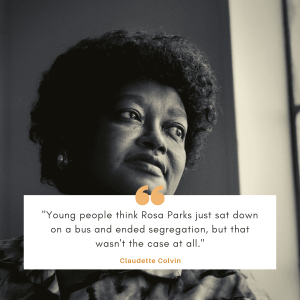
Rosa Parks is rightly famous for her infamous act of resistance. But did you know that nine months prior to that act, a young woman named Claudette Colvin executed virtually the same act?
At age 15, Colvin was motivated by what she’d been learning in school about Black history, and decided to take a stance. On the bus one day, she refused to get up for a White passenger on the bus.
Evidently, at the time, Montgomery laws required Black passengers to sit behind White passengers. So after Colvin refused to get up, two police officers removed her from the bus and arrested her. She was charged with violating segregation law, disorderly conduct, and assaulting a police officer.
So why isn’t Claudette Colvin as well-known as Rosa Parks?
Montgomery lawyer Fred D. Gray took on Colvin’s case, but ultimately decided not to proceed. This was partially because she was too dark-skinned and because at age 16, she got pregnant, factors which, people believed, hurt her chances of winning the case.
Final thoughts
When we promote those historical depictions that exclude contributing women, in a way, we’re censoring them—since we’re removing them from the narrative. So remembering these women is essentially a form of giving them a voice, in turn providing them with much-needed recognition and hopefully, celebration.





